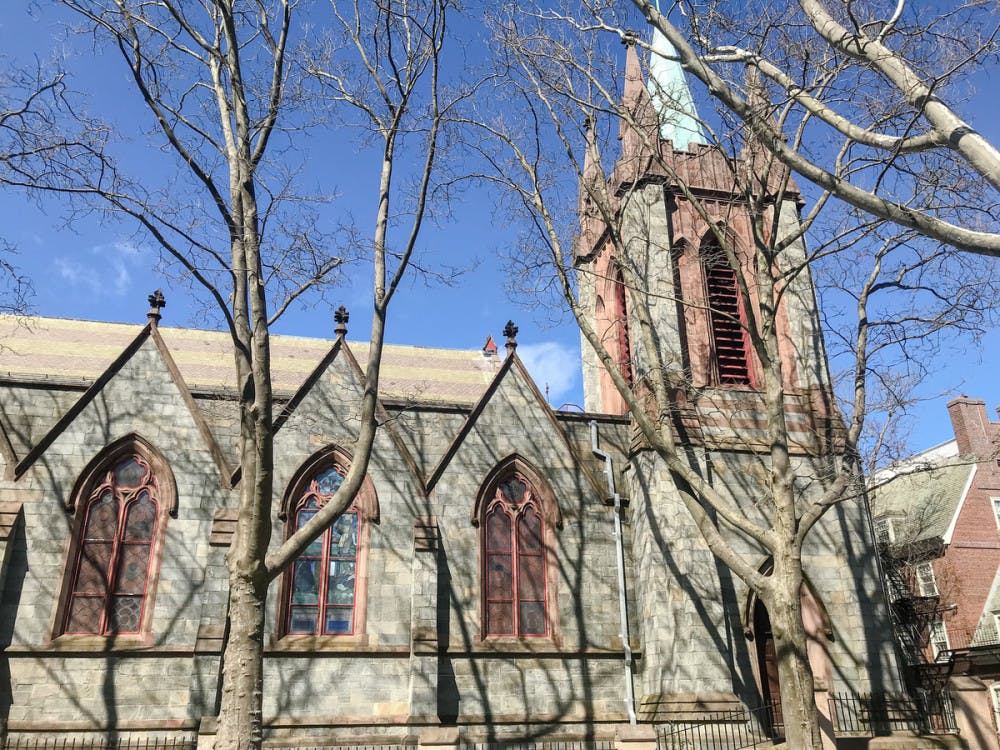Ash Wednesday occurred just before St. Stephen’s Episcopal Church reopened its doors for in-person services on March 1, but Reverend Benjamin Straley modified his church’s service to give parishioners a sense of normalcy.
“We livestreamed the main liturgy, but I also sat outside for a few hours on Wednesday and just distributed ashes at the door of the church,” Straley said.
St. Stephen’s, like all other churches and places of worship, had to cut down on in-person events due to COVID-19 shutdowns. Now, with looser government restrictions in place, in-person services are coming back to life throughout Providence at places of worship, which have been able to operate at 40 percent capacity since mid-February, up from 25 percent previously.
Straley said that many places of worship initially adapted to COVID-19 restrictions by transitioning to interactive livestreams, but some aspects of religious gatherings were lost in the shift.
“We switched right away to using someone’s phone to do Facebook livestreams of Sunday liturgy and the daily mass, but it’s really just the bare bones,” Straley said.
According to Executive Director at Temple Beth-El Judy Moseley, the transition to online services took some trial and error.
“When COVID first hit, we started to pre-record services and post them on our website, but people wanted them to be more interactive,” she said. “Now we use Facebook Live.”
Straley said that keeping parishioners engaged and connected has been a challenge when using online platforms.
“Some of our oldest parishioners aren't interested or don't want to bother to use it,” Straley said. “There has been some resistance and even amongst some younger people, they just aren't interested in an online thing. Frankly, it’s kind of impossible to build a community out of strangers that don’t know each other over computer screens and to reach out to students the way we normally would have.”
Pastor at Sanctuary Church Andrew Mook, said that the challenges of online worship go beyond technological barriers.
“We're a very young church, and we already had a very tech savvy community, so moving online wasn’t the hard part,” Mook said. “The challenge was how to create spaces for people to connect and not just passively observe.”
To foster community, Mook said that Sanctuary has included invitations to Zoom discussions at the end of livestreams and started a “tag” initiative in which members reach out to friends and family who are disconnected or struggling during the pandemic.
Moseley said that while many fell off the grid in the transition to online services, the convenience of virtual worship had the unforeseen benefit of increasing attendance for some events.
“We probably lost a couple of our elderly regulars that aren't great with technology, but we've also gained a lot more people by being accessible,” she said. “We have a service every single day where people come to do basic prayers or say a memorial for someone, and that service has had better attendance.”
Beyond being more convenient, online services also enable places of worship to reach new audiences, Straley said.
“There's actually been a couple of cases where I asked people who were new at the end of the summer how they heard about us, and they had come across our Facebook Live,” he said.
Online events may also feel like less of a commitment for those hesitant to attend in-person services, Mook said.
“For people who would never dream of setting foot in a church because of things that they’ve assumed about it, it’s allowed them to be able to see into our community anonymously,” Mook said. “That’s been a really neat gift where folks who probably would never walk through the doors will reach out and say ‘I was so encouraged by that message.’”
Even as COVID-19 cases are falling and places of worship are hosting more in-person services, many religious communities are planning to continue their online events.
“For the foreseeable future, we definitely are going to have an online gathering as well, as we’ve noticed not everyone was going to feel comfortable at the same time about regathering,” Mook said. “Probably beyond even when everyone feels safe, I think we will continue to utilize some aspects of online Sundays, because I think people are used to that (now).”
“We're certainly looking at continuing some kind of hybrid so that we can include more and more people,” Moseley said.
As online events continue, many are cautiously looking forward to a return to in-person gatherings, although those events will continue to require safety precautions.
Straley said that St. Stephen’s reopened for in-person worship around mid-July, with precautions including face mask requirements, a sign-in table at the front door for contract tracing, six feet of distance between groups and a lack of congregational singing and communion wine.
While St. Stephen’s decided to stop hosting in-person services in November as COVID-19 cases increased, Straley said that these precautions will continue in the new phase of reopening, including the church’s upcoming Easter Sunday mass.
Mook said that Sanctuary Church is working out logistics for its Easter Sunday gathering, including how far apart people need to be distanced and how attendees will walk in and out.
“Easter will be our first in-person Sunday gathering in a year,” Mook said. “Symbolically, it feels like new life. It feels like a good breath of hope.”
Caleb Lazar was the senior editor of data desk for The Brown Daily Herald's 133rd Editorial Board.





